
EASY WAY TO UNDERSTAND DIRECT AND INDIRECT SPEECH RULES Readmyhelp Direct and indirect
To change direct speech to indirect speech, you need to follow some rules. Firstly, you need to change the tense of the verb in the reported speech to match the tense of the reporting verb. Secondly, you need to change the pronouns and adverbs in the reported speech to match the new speaker. Here's an example:

Direct and Indirect Speech Spoken English Guru
Direct: Mary said, "I am going to the US next month." Tortuous: Mary said that they was going to the US the following month.; Direct: The sports teacher said, "Run fast, boys." Indirect: The sports mentor asked one boys to run faster.; Stylish these two examples, you mag will observed that when we use direct speech, we make quotations to outline the real words regarding the speaker.
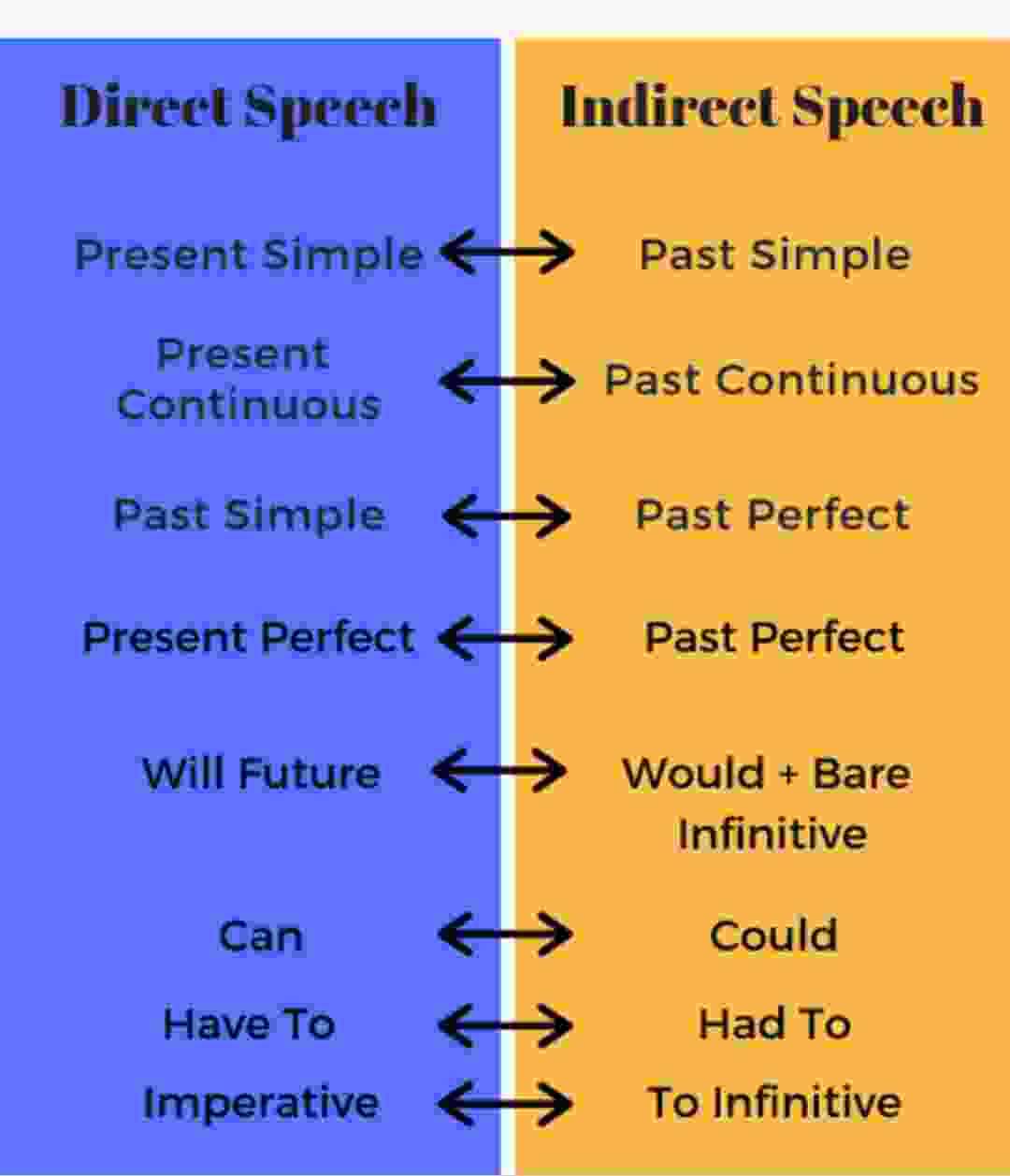
Direct And Indirect Speech Rules Chart Pdf Download Riset
Direct: Dear said, "I am going to the US next month." Indirect: Merry said the she was going to the US the following month.; Direct: That sports teacher said, "Run fast, boys." Indirect: The sports teacher asked the boys toward run fast.; In those two examples, you might have observed that when we use direct talking, wealth use quotations to outline the real words of the speaker.

Direct and Indirect Speech, Definition and Rules Chart PDF
The basics tip to detect that difference amid direct and indirect speak is that in case of go speech our employ inverted commas where are not used in case of indirect speech. Further, we use of word 'that' in general, the indirect speech. Topics: Kurz Speech Vs Indirect Speech. Comparability Chart; Definitions; Key Differences; Rules are Examples

20 sentences of direct and indirect speech Direct speech is the ones that the person establishes
Direct speech is the mode of expression that directly presents the words spoken or quoted by a third person. Generally, direct speech is written inside quotation marks (""). The quotation is used to differentiate the speech of the third person that has happened in the past.
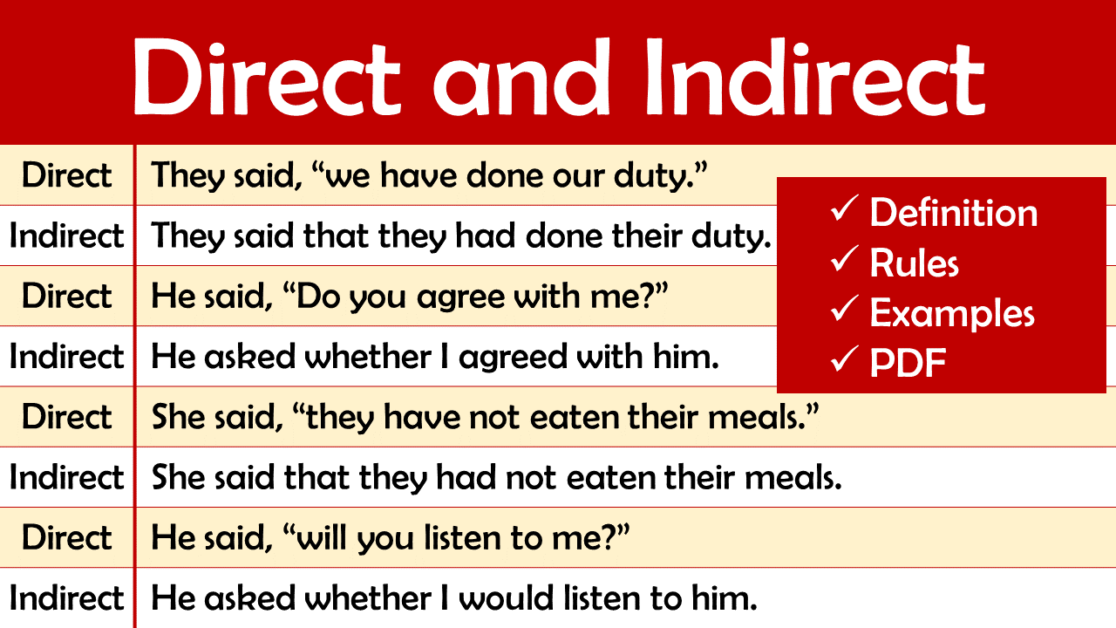
50 examples of direct and indirect speech pdf EngDic
There are two forms of Speech used to explain what other people say: direct Speech and indirect Speech (or reported Speech). Direct Speech The same words spoken are quoted indirect Speech. If we use Direct Speech in writing, we bring the words spoken between quotation marks (" ") and leave them alone.
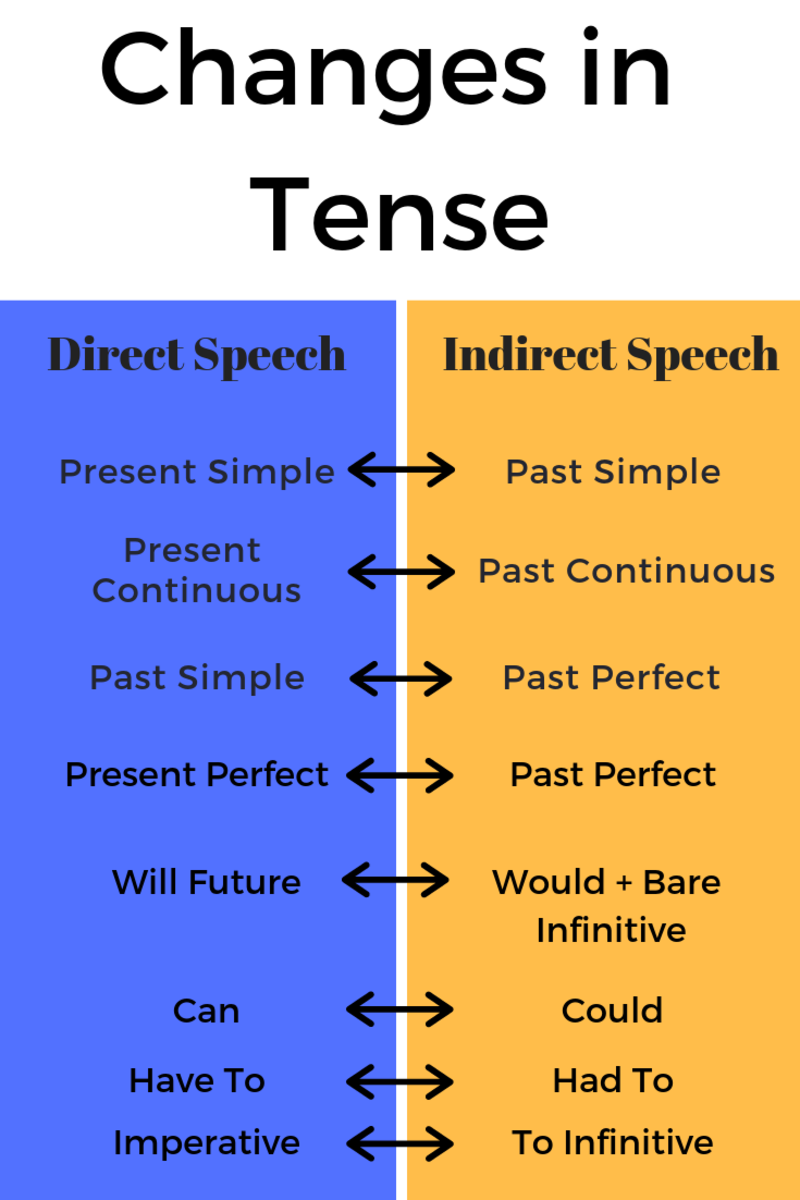
Direct and Indirect Speech With Examples and Explanations Owlcation
What is Indirect Speech? Indirect speech is a way of reporting what someone said using a paraphrased version of their words. In indirect speech, the writer rephrases the speaker's words and incorporates them into the sentence. Here are some examples of indirect speech: John said that he was going to the store.

Direct and Indirect Speeches Literary English
Learn Direct and Indirect Speech since sum tenses with important rules, examples and explanation. Received that theory plus practice a from Eduncle definitely FREE!
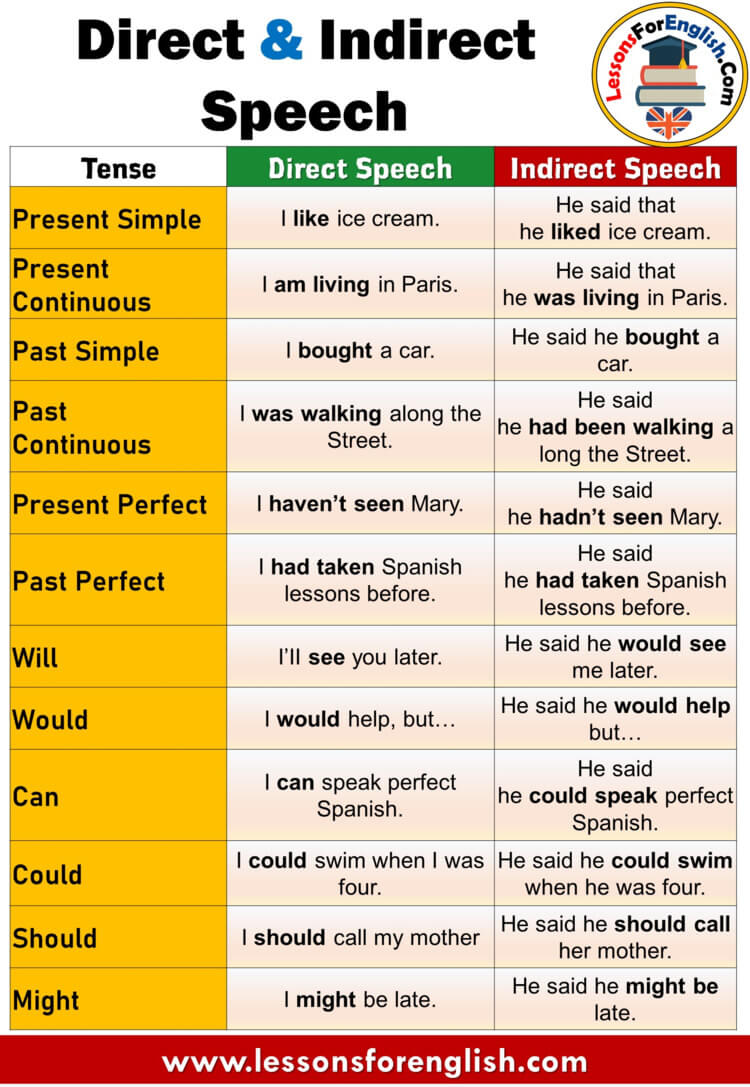
Direct & Indirect Speech, Tenses and Example Sentences Lessons For English
Direct: Mother said, "may God bless you!" Indirect: Mother prayed that God might bless me. Direct: I said to Mr. Sen, "Good Evening!" Indirect: I wished Mr. Sen good evening. Direct: He said to her, "May you succeed!" Indirect: He wished her success. 2. Exclamatory sentences

Direct and Indirect Speech With Examples and Detailed Explanations Direct speech is the ones
Direct: Mary said, "I am going until the US next month." Indirect: Madonna said ensure she was going to the US the following month.; Direct: The sports teacher say, "Run quick, boys." Impeded: The sport teacher requested the boys to run fast.; In these two samples, you might have observed so when we use kurz speech, we use quotations at outline the real words of an speaker.
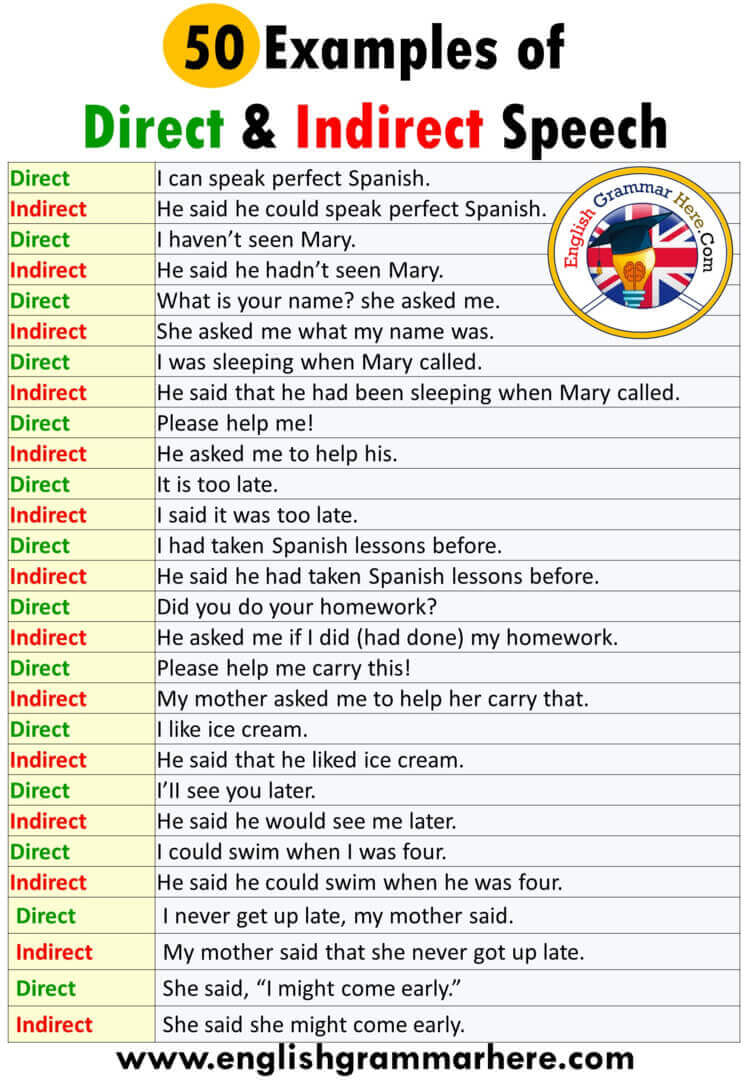
50 examples of direct and indirect speech English Grammar Here
We conclude that direct speech is a language universal. The final part of the paper is about "indirect speech", focusing on the English 'say that' construction. An overall theme of our paper is that specialised and hybrid forms of reported speech, including logophoric speech, reflect cultural concerns and practices.
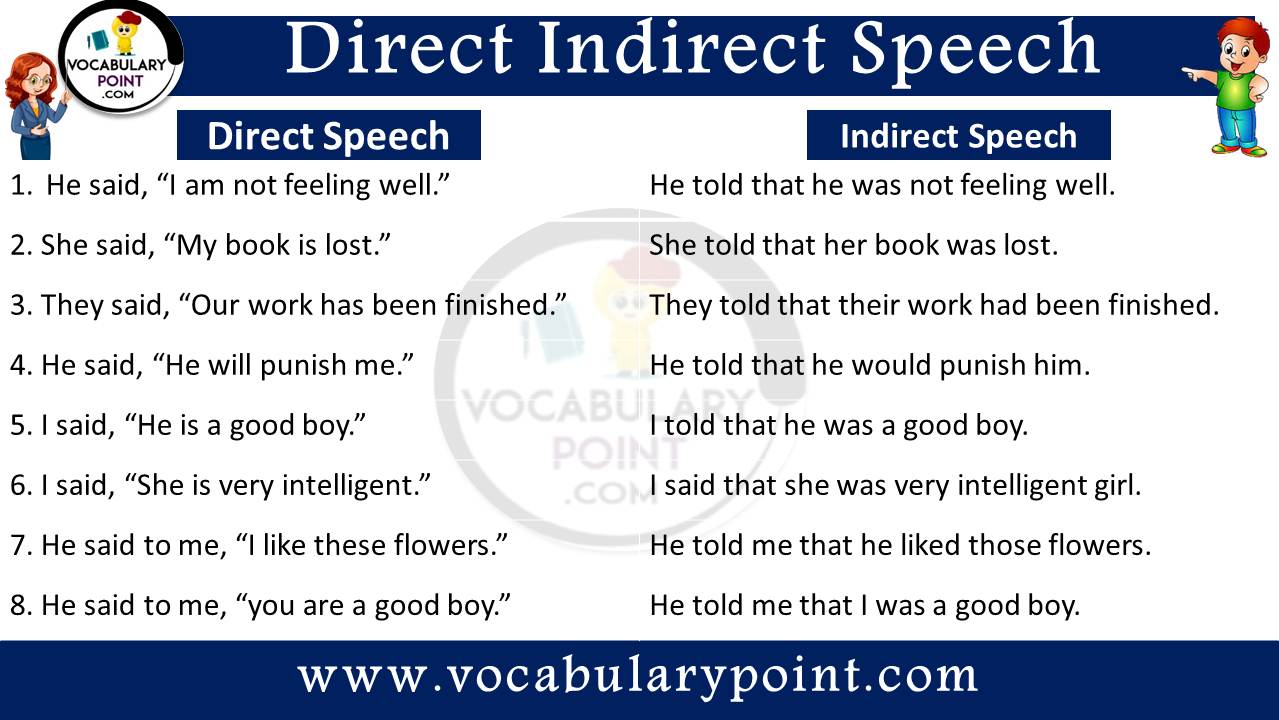
Direct Indirect speech with examples and rules pdf Vocabulary Point
Direct speech: "I'm seeing my brother tomorrow.". Indirect speech: She said she was seeing her brother the following day. Direct speech: "I had a headache yesterday.". Indirect speech: You said you'd had a headache the day before yesterday. Direct speech: "It's been raining since this afternoon.".

Direct and Indirect Speech Direct and indirect speech, Teaching english grammar, Learn english
Direct: You said, "I will have completed my homework in class.". Indirect: You said that you would have completed your homework in your class. 2. Change the 2nd person (you, your, etc) according to the object of the reporting verb. Direct: He said to her, "You had prepared your plan yourself.".

SOLUTION Direct and Indirect speech IN ENGLISH GRAMMAR Studypool
1. Eliminate the quotation marks that enclose the relayed text. 2. Retain the tense of the reporting verb and add the word "that" after it. 3. Change the tense of the verb in the reported speech, if needed. 4. Change the pronouns accordingly. Tense Changes in Indirect Speech Verb Tenses Changes Other Verb Form Changes in Reported Speech

Direct And Indirect Speech Verb Tense Changes With Rules & Examples 7 E S L English Grammar
Here are some examples: Example 1: Everyday conversation Direct speech: "Hey, how are you doing?" asked John. In this example, John's exact words are being reported using direct speech. Example 2: News article Direct speech: "We are deeply saddened by the loss of our beloved friend and colleague," said the company's CEO in a.

Direct And Indirect Speech Posters Direct And Indirect Speech Images
In Direct speech, the conversation will be written under inverted commas. In the indirect speech, the inverted commas won't be there. Before the indirect statement starts, you need to put the conjunction 'that' before the statement. In Direct speech, First Person Singular and Plural or Second Person Singular and Plural are in use; in.